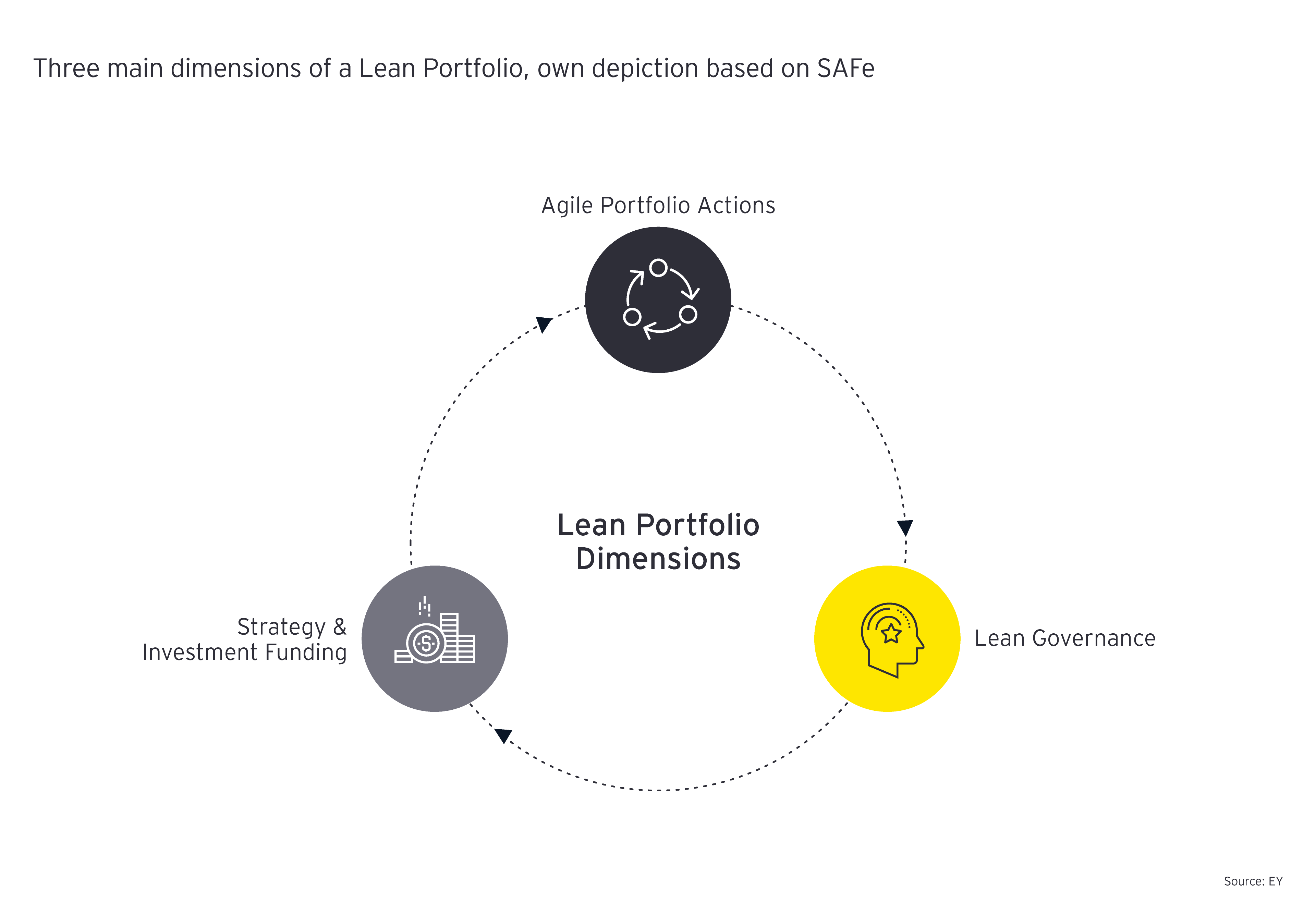The Lean Method
LPM is based on the Lean Method, the basic idea of which is to focus on creating customer value. The inventors’ aim was to minimize waste in processes (i.e., process steps without added value for the customer), develop a continuous value stream, and increase efficiency and productivity. The Lean Method comprises five basic principles of an effective and efficient value chain:

- Define value: The first step is to define the value of the product or service and communicate it clearly to all stakeholders.
- Create a value stream map: A value stream analysis or value stream mapping (VSM) helps to compare the current workflow with the ideal workflow between the project initiation and project completion phases and highlight inconsistencies.
- Develop a value stream: The flow principle is one of the central elements of Lean thinking and aims to eliminate waste. The inconsistencies mentioned in the second point must be addressed and eliminated in order to achieve the smoothest possible process.
- Pull system: Alongside the flow principle, the pull principle is another key element of Lean thinking. The aim is to ensure that activities only arise when there is an actual need for them and not on the basis of forecasts. This reduces dependence on actual demand and avoids wasting resources.
- Continuous improvement "Kaizen": The "Kaizen" principle encourages employees to achieve a state of continuous improvement. The four previous Lean principles are constantly reviewed and scrutinized.
LPM is a further development based on the Lean Method. It combines the five Lean principles with the way organizations and companies plan their strategies and finance their investments. LPM offers a dynamic and goal-oriented approach that promotes a continuous flow of value creation. The goal of LPM is to maximize value creation. LPM focuses on managing the backlog to focus on the highest value goals of the company or organization. By clearly prioritizing the projects and tasks that generate the most value for citizens and the organization, value creation is maximized.
Building a Lean Portfolio Management
LPM adheres to key principles to integrate agile approaches and Lean principles at portfolio levels in organizations, ensuring that projects are executed efficiently and that continuous value is generated for the department. The essential points include:
- All activities in the portfolio are linked to strategic goals and priorities.
- Agile Principles enable flexibility and rapid adaptation to changing conditions.
- Continuous value is created for the department and society.
- Portfolio management is conducted transparently at all levels, promoting good cooperation.
- Redundant activities are avoided.
- A continuous improvement process ensures the effectiveness of the activities.

The core principles of LPM are operationalized by three main dimensions of the SAFe framework. These interconnected dimensions form the foundation for a successful execution of strategic objectives.
Innovative outlooks for the future
Public sector projects are under constant pressure to use resources effectively by carrying out initiatives as efficiently as possible while ensuring they deliver sustainable and tangible value to the public. In doing so, it is also expected that quality standards are maintained and strategic objectives (i.e. the mandate) pursued. LPM offers promising possibilities for the public sector to optimize efficiency and effectiveness of initiatives. It aims to optimize the utilization of limited resources and promote clear prioritization of projects that generate maximum value for the organization as well as its stakeholders. The application of agile methods, which permits a flexible adjustment to evolving conditions as well as changes in citizens’ demands, promote a perpetual cycle of improvement.
Summary
Lean Portfolio Management (LPM) aids the public sector in adapting proficiently to dynamic environments. Harnessing Lean Methodologies and Agile Principles enables efficient project prioritization, optimal resource allocation and enhanced transparency.



